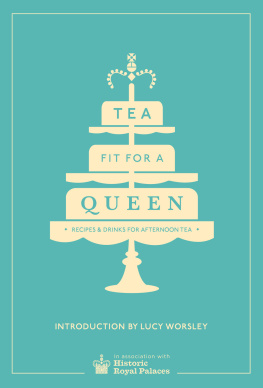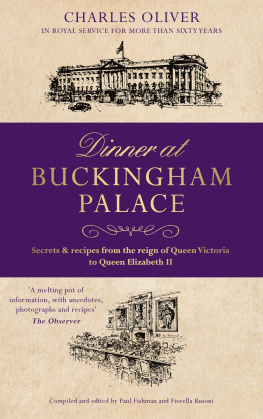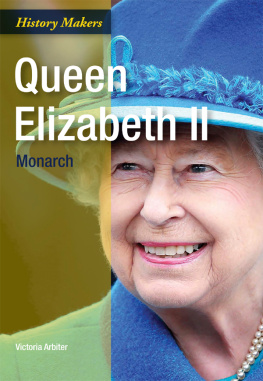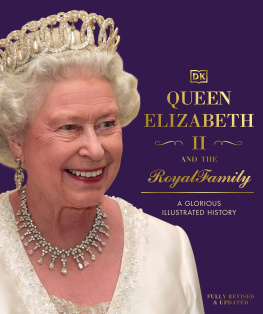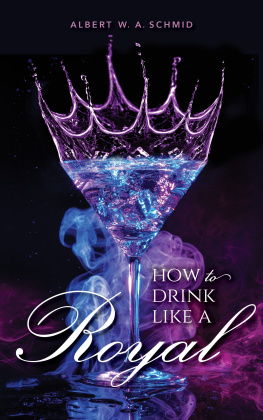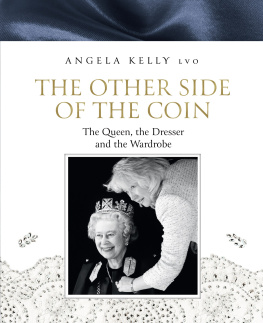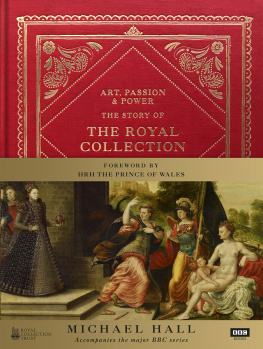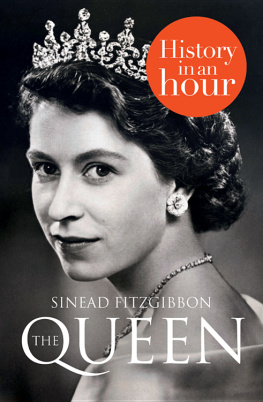CONTENTS
Historic Royal Palaces is an independent charity. We raise all our own funds and depend on the support of our visitors, members, donors, sponsors and volunteers. The proceeds from the sale of Tea Fit For A Queen, as do all our gifts and merchandise, go to support our work, so thank you for buying this book and helping to maintain the beautiful historic buildings for future generations to enjoy.
We would like to thank Nicola Crossley, Alison Pearce and Carey Smith at Ebury and the creative team who produced the book: Jan Baldwin, Imogen Fortes, Emma Marsden, Chris Turnbull, Angela Osgerby, Tabitha Hawkins and Laura Nickoll, as well as Alareen Farrell and Sarah Kilby at Historic Royal Palaces.
LIST OF RECIPES
This ebook is copyright material and must not be copied, reproduced, transferred, distributed, leased, licensed or publicly performed or used in any way except as specifically permitted in writing by the publishers, as allowed under the terms and conditions under which it was purchased or as strictly permitted by applicable copyright law. Any unauthorized distribution or use of this text may be a direct infringement of the authors and publishers rights and those responsible may be liable in law accordingly.
Version 1.0
Epub ISBN 9781473502635
www.randomhouse.co.uk
1 3 5 7 9 10 8 6 4 2
Published in 2014 by Ebury Press, an imprint of Ebury Publishing
A Random House Group Company
Text Historic Royal Palaces 2014
Layout and design Ebury Press 2014
Picture credits:
All food photography by Jan Baldwin
All other photography by Historic Royal Palaces ( )
The turquoise and gold fine bone china Royal Palace tea set featured in many of the photographs is exclusive to Historic Royal Palaces, and is avaliable from their online shop at www.hrp.org.uk
All rights reserved. No part of this publication may be reproduced, stored in a retrieval system, or transmitted in any form or by any means, electronic, mechanical, photocopying, recording or otherwise, without the prior permission of the copyright owner. The Random House Group Limited Reg. No. 954009 Addresses for companies within the Random House Group can be found at www.randomhouse.co.uk
To buy books by your favourite authors and register for offers visit
www.randomhouse.co.uk
Writer and project editor: Imogen Fortes
Recipes and food stylist: Emma Marsden
Design and art direction: Turnbull Grey
Photographer: Jan Baldwin
Prop stylist: Tabitha Hawkins
Proofreader: Laura Nickoll
ISBN 9780 09195 871 8
INTRODUCTION BY LUCY WORSLEY CHIEF CURATOR OF HISTORIC ROYAL PALACES
When Im happy, I celebrate with a cup of tea. When Im sad, I console myself with a cup of tea. As a living clich of a British person, tea is central to my life. But talk to the health-conscious and theyll warn you that the caffeine in tea is addictive, and dangerous.
The Georgians would have agreed! In the eighteenth century, the still-novel drink of tea was feared as an intoxicant. Tea is a detestable, fatal liquor, writes the Earl of Bristol in 1731. Drinking it will bring you near to deaths door and will demonstrably hasten your passage through it many years before you need otherwise experience it.
The drink made by stewing the leaves of the Chinese tea plant in water only became fashionable in these islands after a famous case of sea-sickness. People in London began to hear about this new Chinese drink in the years of the Restoration, when King Charles II returned to his throne after Oliver Cromwells Commonwealth.
Everyones favourite seventeenth-century diarist, Samuel Pepys, first tasted tea in 1660. He described having a cup of tee (a China drink) of which I never had drank before on 25th September. (Elsewhere in his diary Pepys, keen for novelty, describes his first sip of the other new drinks of orange juice, and hot chocolate, which he tries as a cure for a hangover.)
But it took the arrival of Charles IIs new young royal bride in 1662 to make tea catch on as our national drink. Catherine of Braganza had endured a terrible ocean voyage to reach England from her home in the south. Her native Portugal had good trading links with the East, and tea was popular there.
Upon landing in Britain, Catherine was still feeling queasy, and asked for a cup of tea. Blank faces greeted her among the British, and the ale she was offered as an alternative didnt quite fit the bill. So the Portuguese princess popularised tea among the members of her court, and of course, they all became addicted.
Tea-drinking was at first an expensive habit, as the leaves had to be imported such a great distance. The holds of the tea clippers bringing tea from the East were also packed with another necessary part of a tea party: delicate china tea dishes (as teacups were known, before they had handles). These were originally incidental to the business of importing tea: the heavy chests of porcelain provided useful ballast for the ships. But then they became highly desirable in their own right.
Tea dishes of the seventeenth century, imported from the East, rarely matched, and the idea that cups should form an identical set did not develop until home-grown British ceramic production took off in the eighteenth century. If you were a rich Stuart or Georgian lady, you would store your tea leaves in a locked caddy, so that your servants couldnt pinch them, and you would host tea parties in the afternoon for your lady friends.
These were occasions to show off your drawing room, your china and your best dress too. Tea, a sociable drink best enjoyed with friends, forms something of an unlikely alliance with feminism. Until tea came along, the standard social gathering tended to be men drinking ale. The new all-female tea parties took place not in the evening but in the afternoon, when the men were busy, and one amusing Georgian print shows husbands, excluded, creeping up to the window to see what their wives were saying about them.
Because tea was so expensive, it did have connotations of luxury and danger. At first only the aristocracy could afford to use it to cure the cares of a lover lost or a gambling debt gamed. (A wise Georgian matron would advise now leave complaining, and bring your Tea.)
By the late eighteenth century, though, tea-drinking was filtering down through society, and so too teapots and teacups were to be found in ordinary peoples houses. In late-Georgian Britain, even servants could insist on an allowance of tea as part of the conditions of their employment.
Tea had become so central to peoples lives that in 1773 it became the focus for the American colonists complaints against the British government. No taxation without representation in Parliament, they insisted, and in the Boston tea party, chests of tea were thrown into Boston harbour after the Americans refused to pay tax on it.
Next page
